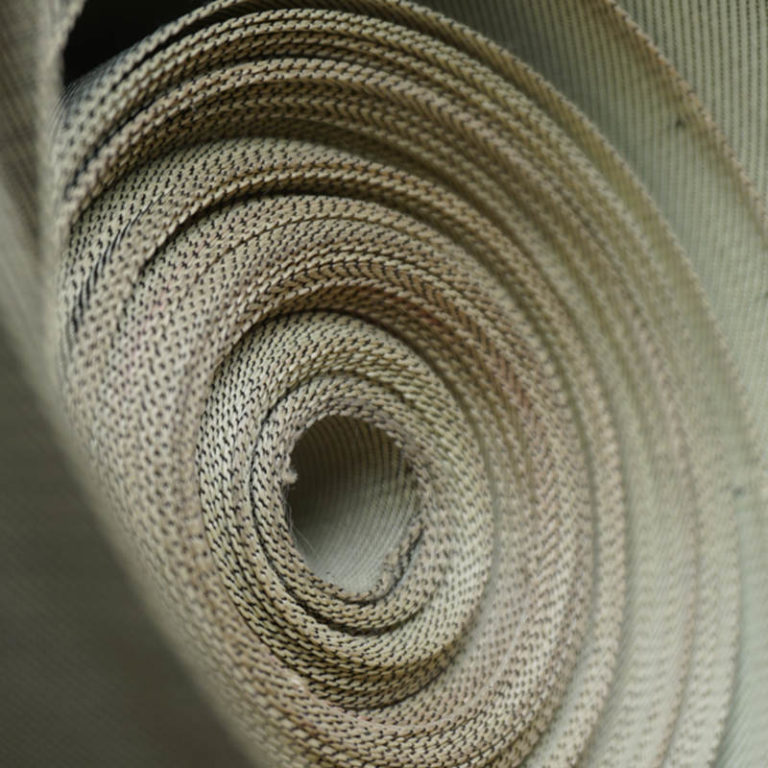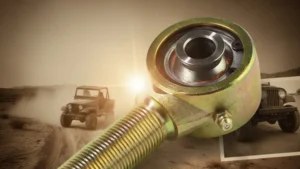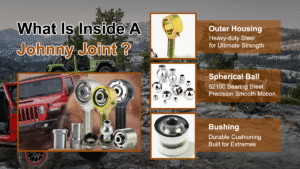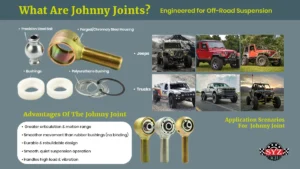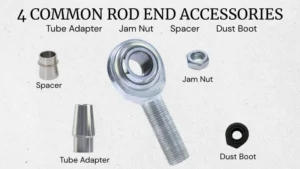Why PTFE Lining Matters
A PTFE liner in a spherical bearing or rod end is a component that makes the unit self-lubricating. Metal-on-metal bearings require lubrication, but in certain applications, lubrication can be difficult to maintain. Grease attracts dirt, which may accelerate wear on the mating metal surfaces. Excessive wear increases fatigue and can ultimately lead to expensive failures.
How PTFE Lining Works
A PTFE liner eliminates the need for external lubrication in spherical and rod end bearings. It typically consists of a base fabric embedded with PTFE, which is bonded to a metal surface using a resin. The liner is applied to the inner portion of the bearing’s outer race (body), allowing the ball to ride directly on the liner. As the ball moves, it slides against the liner, which provides consistent lubrication.
Mechanical Advantages of PTFE Liners
A high-quality PTFE liner will generally have a minimum compressive strength of 40,000 psi. This type of liner significantly reduces internal clearance between the ball and race, allowing for a much tighter fit. Recent advancements in self-lubricating liner technology have enabled manufacturers to offer products with life cycles up to four times longer than earlier versions.
The Importance of Proper Bonding
When selecting a PTFE-lined spherical or rod end bearing, it’s crucial to choose a manufacturer with proven expertise. Bonding PTFE liners is technically challenging due to the material’s low surface energy, which makes adhesion difficult. If the bonding process is incorrect, the liner may separate from the race, compromising the performance and integrity of the bearing.
Consequences of Poor Liner Quality
Liner separation leads to rapid degradation of both the liner and the ball. In severe cases, failure of the spherical or rod end bearing can be catastrophic. PTFE lining standards vary significantly among manufacturers, so it’s essential to evaluate product quality carefully when selecting a supplier.
Final Note
PTFE-lined spherical and rod end bearings offer significant advantages in applications where traditional lubrication is impractical or undesirable. By reducing friction, wear, and the need for maintenance, PTFE liners enhance the reliability and service life of these critical components. However, variations in liner quality and bonding methods mean that not all PTFE-lined bearings perform equally. Engineers and buyers should carefully evaluate specifications and manufacturing standards when selecting these components for demanding applications.
A PTFE liner in a spherical bearing or rod end is a component that allows the unit to be “self-lubricating”. Metal on metal bearings need to be lubricated. In certain applications this can be difficult to accomplish. Grease lubrication attracts dirt and may prematurely wear apposing metal surfaces. Excessive wear will produce increased fatigue and ultimately leads to an expensive failure.
A PTFE liner eliminates the need to lubricate spherical and rod end bearings. A PTFE liner usually consists of a base fabric containing PTFE that is applied to a metal surface with a bonding resin. The liner is adhered to the inner portion of the bearings outer race(Body). This allows the ball to ride on the surface of the liner. When the ball moves it literally rubs on the liner providing the bearings’ lubrication. It is important to understand that an exceptionally good PTFE liner will have a minimum compressive strength of 40,000 psi. A liner of this type greatly reduces internal clearance between the ball and race allowing for a much tighter fit. Recent improvements to self-lubricating liner systems have allowed certain manufacturers the ability to offer products with life cycles four times greater then previously available.
When choosing a PTFE-lined spherical or rod end bearing it is important to select a manufacturer with considerable experience and knowledge. Bonding PTFE liners can be a bit tricky as the nature of the liner can make it difficult to bond to the race. An incorrect bond process may ultimately result in separation of the liner from the race. Liner separation will quickly lead to degradation of the liner and ball. Spherical and rod end failure can be catastrophic. PTFE lining standards vary between manufacturers and should be carefully considered when choosing a supplier. Next time you are in the market for a PTFE-lined spherical or rod end let National Precision Bearing help provide you with the appropriate manufacturer and liner for your application.


